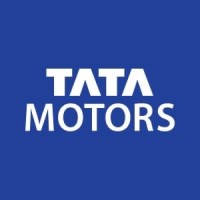
Tata Motors Company Cyber Security Posture
tatamotors.comTata Motors Group (Tata Motors) is a leading global automobile manufacturing company. Its diverse portfolio includes an extensive range of cars, sports utility vehicles, trucks, buses and defence vehicles. The Tata Motors Group’s over 80,000 employees are guided by the mission “to innovate mobility solutions with passion to enhance quality of life".
Tata Motors Company Details
tata-motors
62984 employees
5457910.0
336
Motor Vehicle Manufacturing
tatamotors.com
Scan still pending
TAT_3283295
In-progress
Between 900 and 1000
This score is AI-generated and less favored by cyber insurers, who prefer the TPRM score.
 Tata Motors Global Score
Tata Motors Global Score.png)

Tata Motors Company Scoring based on AI Models
| Model Name | Date | Description | Current Score Difference | Score |
|---|---|---|---|---|
| AVERAGE-Industry | 03-12-2025 | This score represents the average cybersecurity rating of companies already scanned within the same industry. It provides a benchmark to compare an individual company's security posture against its industry peers. | N/A | Between 900 and 1000 |
Tata Motors Company Cyber Security News & History
| Entity | Type | Severity | Impact | Seen | Url ID | Details | View |
|---|---|---|---|---|---|---|---|
| Jaguar Land Rover | Breach | 100 | 5 | 05/2018 | JAG19424722 | Link | |
Rankiteo Explanation : Attack threatening the organization's existenceDescription: A massive data leak has revealed the personnel files of hundreds of employees at Jaguar Land Rover's factory in Solihull, England. The documents reveal details such as sick days used, disciplinary issues, and most notably red lines indicating potential firings in the weeks or months ahead. The personal records of more than 600 workers were released. The main culprits include a huge slump in sales of diesel-powered vehicles, a vital part of JLR's business in the U.K. and throughout Europe along with fears about how the upcoming "Brexit" will affect business operations. | |||||||
| Tata Technologies | Ransomware | 85 | 3 | 2/2025 | TAT000020325 | Link | |
Rankiteo Explanation : Attack with significant impact with internal employee data leaksDescription: Tata Technologies, a subsidiary of Tata Motors, encountered a ransomware attack leading to the suspension of certain IT services as a precautionary measure. The incident targeted a segment of its IT infrastructure. While client delivery services remained unaffected, the extent of data breach, if any, was not disclosed. Notably, this follows a previous cyber incident in October 2022 where Tata Power faced a ransomware attack, with subsequent leakage of stolen information by Hive ransomware gang including sensitive employee and operational data. | |||||||
| Tata Technologies | Ransomware | 85 | 3 | 3/2025 | TAT702030425 | Link | |
Rankiteo Explanation : Attack with significant impact with internal employee data leaksDescription: The Hunters International ransomware gang targeted Tata Technologies in a January cyberattack, claiming to have stolen 1.4TB of data, disrupting IT systems but not affecting client delivery services. The impact on operations was reported as minimal, with no client data or critical service disruptions mentioned, but the breach included a threat to release the stolen files if no ransom was paid. | |||||||
| Tata Technologies | Ransomware | 100 | 4 | 4/2025 | TAT235040325 | Link | |
Rankiteo Explanation : Attack with significant impact with customers data leaksDescription: Tata Technologies, a global engineering and product development digital services company, was one of the victims of the Hunters International cybercriminal group. During their operations, before considering a move away from ransomware to purely data theft extortion schemes, Hunters International compromised and possibly extracted sensitive data from the company. The exact nature of the data stolen or the full consequences of the breach were not detailed, but given the profile of the company and the typical operational patterns of ransomware groups, the impact could be significant in terms of financial loss, intellectual property theft, and reputational damage. | |||||||
Tata Motors Company Subsidiaries

Tata Motors Group (Tata Motors) is a leading global automobile manufacturing company. Its diverse portfolio includes an extensive range of cars, sports utility vehicles, trucks, buses and defence vehicles. The Tata Motors Group’s over 80,000 employees are guided by the mission “to innovate mobility solutions with passion to enhance quality of life".
Access Data Using Our API

Get company history
.png)
Tata Motors Cyber Security News
TETHER AUTO - Connected Vehicle Platform | Automotive
Tata Elxsi's Connected vehicle platform provides access to crucial information metrics and comfort, convenience, and safety via a digital experience.
Tata Technologies hit by ransomware attack
Major Indian tech firm Tata Technologies has confirmed it suffered a ransomware attack that forced it to take a number of its IT systems offline ...
Tata Technologies Allegedly Breached - Huntress Claim Leak of Sensitive data
Indian multinational tech giant Tata Technologies, a subsidiary of Tata Motors, is in the spotlight following allegations by ransomware ...
Tata Technologies Hit by Hunters International Ransomware, 1.4TB Data at Risk
Tata Technologies, a subsidiary of Indian multinational conglomerate Tata Motors, has reportedly been targeted by the ransomware group Hunters ...
Ransomware thugs threaten Tata Technologies with leak if demands not met
Tata Technologies is a product engineering subsidiary of the industry behemoth Tata Motors, which owns Jaguar Land Rover and Daewoo. The company ...
Indian tech giant Tata Technologies hit by ransomware attack
Tata Technologies Ltd. had to suspend some of its IT services following a ransomware attack that impacted the company network.
Cybersecurity likely to become must-have feature in next-gen connected vehicles: Experts
With cars and transport vehicles becoming more connected and software-driven, automotive cybersecurity is likely to become a standard feature ...
Tata Technologies says ransomware attack hit IT assets, investigation ongoing
Tata Technologies, a technology and product engineering service company owned by Indian conglomerate Tata Group, has disclosed a ransomware attack.
SWOT analysis of TATA Motors (Updated [year])
1. Research and Development. Tata Motors increased its spending on research and development (R&D) by 45% year-on-year to Rs. 29,398 crore ...

Tata Motors Similar Companies
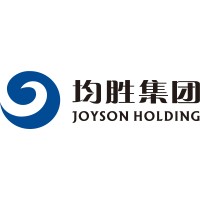
Joyson Group
Joyson Group is a young, ambitious high-tech company, its headquarter is located in Ningbo, China. With more than 100 bases in 30 countries, over 40000 employees globally. Founded in 2004, Joyson 's main products used to be automotive functional components. Since 2011, the company has acquired se

Audi South Africa
At Audi, there is a rare spirit. A spirit of bravery and pioneering. It's what motivates our engineers, our people and ultimately our drivers. It's what makes Audi like no other car in the world. Vorsprung durch Technik: these words are not merely a catch phrase, it is the way we do things at Aud
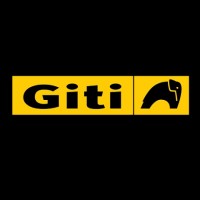
Giti Tire
With tire experience of more than 60 years and a reputation for quality tire products worldwide, Giti Tire is truly a global tire company. We are ranked among the top companies in the tire industry, and take pride in being on the forefront of innovation and service. With motorsports success around

OPmobility
OPmobility is a world leader in sustainable mobility and a technology partner to mobility players worldwide. Driven by innovation since its creation in 1946, the Group is today composed of five complementary business groups that enable it to offer its customers a wide range of solutions: intelligent

Porsche AG
“In the beginning I looked around and could not find quite the car I dreamed of. So I decided to build it myself.“ This quote from Ferry Porsche gets to the heart of everything that makes Porsche what it is. It has been our guiding star – for more than 70 years. With commitment, passion and enthusi
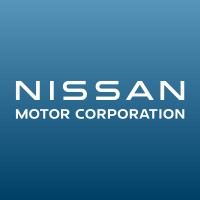
Nissan Motor Corporation
Nissan Motor Corporation is a global car manufacturer that sells a full line of vehicles under the Nissan and INFINITI brands. Nissan’s global headquarters in Yokohama, Japan, manages operations in four regions: Japan-ASEAN, China, Americas, and AMIEO (Africa, Middle East, India, Europe & Oceania).

Frequently Asked Questions
Explore insights on cybersecurity incidents, risk posture, and Rankiteo's assessments.
Tata Motors CyberSecurity History Information
How many cyber incidents has Tata Motors faced?
Total Incidents: According to Rankiteo, Tata Motors has faced 4 incidents in the past.
What types of cybersecurity incidents have occurred at Tata Motors?
Incident Types: The types of cybersecurity incidents that have occurred incidents Ransomware and Breach.
How does Tata Motors detect and respond to cybersecurity incidents?
Detection and Response: The company detects and responds to cybersecurity incidents through containment measures with Suspension of certain IT services.
Incident Details
Can you provide details on each incident?
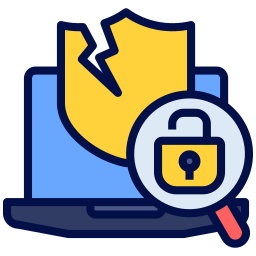
Incident : Data Breach
Title: Tata Technologies Data Breach by Hunters International
Description: Tata Technologies, a global engineering and product development digital services company, was one of the victims of the Hunters International cybercriminal group. During their operations, before considering a move away from ransomware to purely data theft extortion schemes, Hunters International compromised and possibly extracted sensitive data from the company. The exact nature of the data stolen or the full consequences of the breach were not detailed, but given the profile of the company and the typical operational patterns of ransomware groups, the impact could be significant in terms of financial loss, intellectual property theft, and reputational damage.
Type: Data Breach
Threat Actor: Hunters International
Motivation: Financial Gain, Intellectual Property Theft

Incident : Ransomware
Title: Tata Technologies Ransomware Attack
Description: The Hunters International ransomware gang targeted Tata Technologies in a January cyberattack, claiming to have stolen 1.4TB of data, disrupting IT systems but not affecting client delivery services. The impact on operations was reported as minimal, with no client data or critical service disruptions mentioned, but the breach included a threat to release the stolen files if no ransom was paid.
Date Detected: January 2023
Type: Ransomware
Threat Actor: Hunters International
Motivation: Financial gain

Incident : Ransomware Attack
Title: Ransomware Attack on Tata Technologies
Description: Tata Technologies encountered a ransomware attack leading to the suspension of certain IT services as a precautionary measure. The incident targeted a segment of its IT infrastructure. While client delivery services remained unaffected, the extent of data breach, if any, was not disclosed. This follows a previous cyber incident in October 2022 where Tata Power faced a ransomware attack, with subsequent leakage of stolen information by Hive ransomware gang including sensitive employee and operational data.
Type: Ransomware Attack
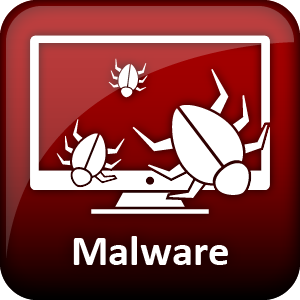
Incident : Data Leak
Title: Jaguar Land Rover Data Leak
Description: A massive data leak has revealed the personnel files of hundreds of employees at Jaguar Land Rover's factory in Solihull, England. The documents reveal details such as sick days used, disciplinary issues, and most notably red lines indicating potential firings in the weeks or months ahead. The personal records of more than 600 workers were released.
Type: Data Leak
What are the most common types of attacks the company has faced?
Common Attack Types: The most common types of attacks the company has faced is Ransomware.
Impact of the Incidents
What was the impact of each incident?

Incident : Data Breach TAT235040325
Data Compromised: Sensitive Data
Brand Reputation Impact: Significant

Incident : Ransomware TAT702030425
Data Compromised: 1.4TB
Systems Affected: IT systems
Operational Impact: Minimal

Incident : Ransomware Attack TAT000020325
Systems Affected: Segment of IT infrastructure

Incident : Data Leak JAG19424722
Data Compromised: Personnel files including sick days, disciplinary issues, and potential firings
What types of data are most commonly compromised in incidents?
Commonly Compromised Data Types: The types of data most commonly compromised in incidents are Sensitive Data and Personnel files.
Which entities were affected by each incident?

Incident : Data Breach TAT235040325
Entity Type: Company
Industry: Engineering and Product Development Digital Services

Incident : Data Leak JAG19424722
Entity Type: Company
Industry: Automobile Manufacturing
Location: Solihull, England
Response to the Incidents
What measures were taken in response to each incident?

Incident : Ransomware Attack TAT000020325
Containment Measures: Suspension of certain IT services
Data Breach Information
What type of data was compromised in each breach?

Incident : Data Breach TAT235040325
Type of Data Compromised: Sensitive Data
Sensitivity of Data: High

Incident : Ransomware TAT702030425
Data Exfiltration: True

Incident : Data Leak JAG19424722
Type of Data Compromised: Personnel files
Number of Records Exposed: 600
Sensitivity of Data: High
How does the company handle incidents involving personally identifiable information (PII)?
Handling of PII Incidents: The company handles incidents involving personally identifiable information (PII) through was Suspension of certain IT services.
Ransomware Information
Was ransomware involved in any of the incidents?

Incident : Ransomware TAT702030425
Data Exfiltration: True
Additional Questions
General Information
Who was the attacking group in the last incident?
Last Attacking Group: The attacking group in the last incident were an Hunters International and Hunters International.
Incident Details
What was the most recent incident detected?
Most Recent Incident Detected: The most recent incident detected was on January 2023.
Impact of the Incidents
What was the most significant data compromised in an incident?
Most Significant Data Compromised: The most significant data compromised in an incident were Sensitive Data, 1.4TB, Personnel files including sick days, disciplinary issues and and potential firings.
What was the most significant system affected in an incident?
Most Significant System Affected: The most significant system affected in an incident was IT systems and Segment of IT infrastructure.
Response to the Incidents
What containment measures were taken in the most recent incident?
Containment Measures in Most Recent Incident: The containment measures taken in the most recent incident was Suspension of certain IT services.
Data Breach Information
What was the most sensitive data compromised in a breach?
Most Sensitive Data Compromised: The most sensitive data compromised in a breach were Sensitive Data, 1.4TB, Personnel files including sick days, disciplinary issues and and potential firings.
What was the number of records exposed in the most significant breach?
Number of Records Exposed in Most Significant Breach: The number of records exposed in the most significant breach was 600.0.
What Do We Measure?
















Every week, Rankiteo analyzes billions of signals to give organizations a sharper, faster view of emerging risks. With deeper, more actionable intelligence at their fingertips, security teams can outpace threat actors, respond instantly to Zero-Day attacks, and dramatically shrink their risk exposure window.
These are some of the factors we use to calculate the overall score:
Identify exposed access points, detect misconfigured SSL certificates, and uncover vulnerabilities across the network infrastructure.
Gain visibility into the software components used within an organization to detect vulnerabilities, manage risk, and ensure supply chain security.
Monitor and manage all IT assets and their configurations to ensure accurate, real-time visibility across the company's technology environment.
Leverage real-time insights on active threats, malware campaigns, and emerging vulnerabilities to proactively defend against evolving cyberattacks.




